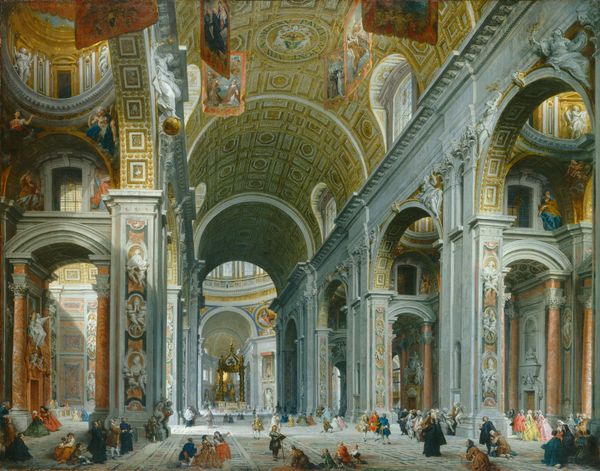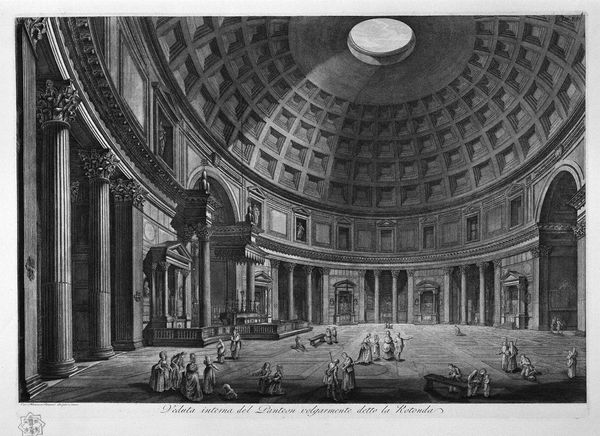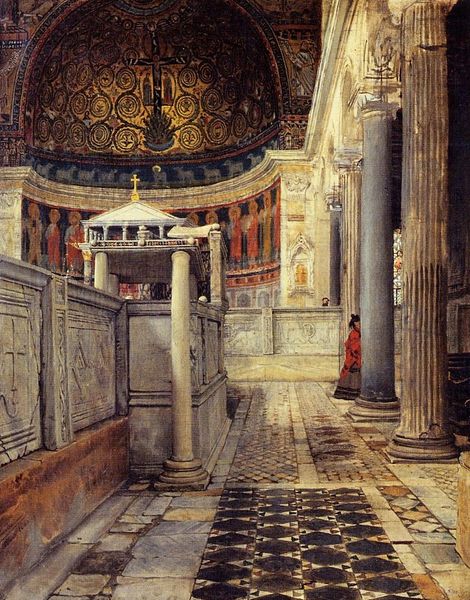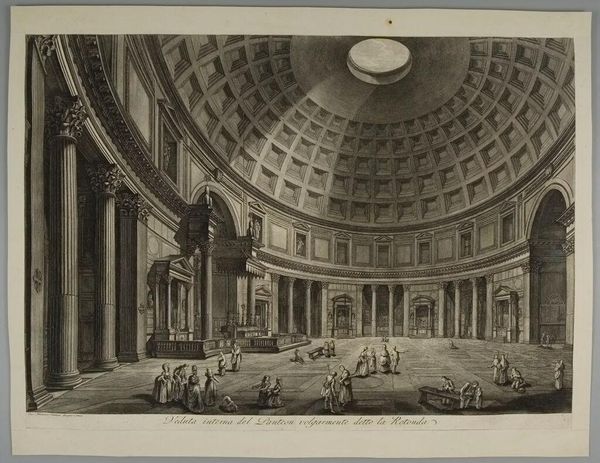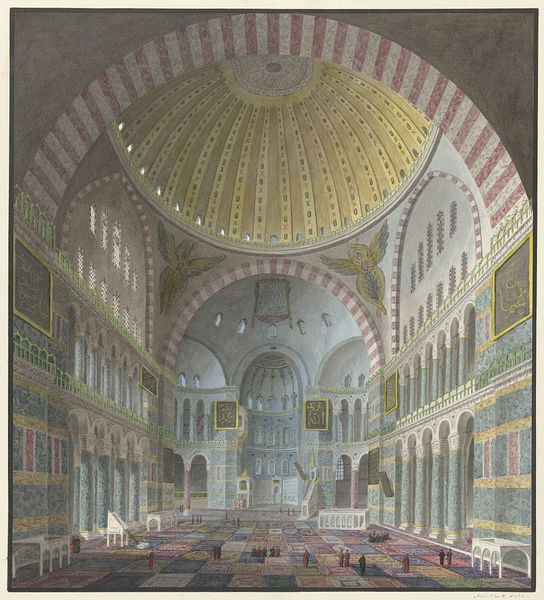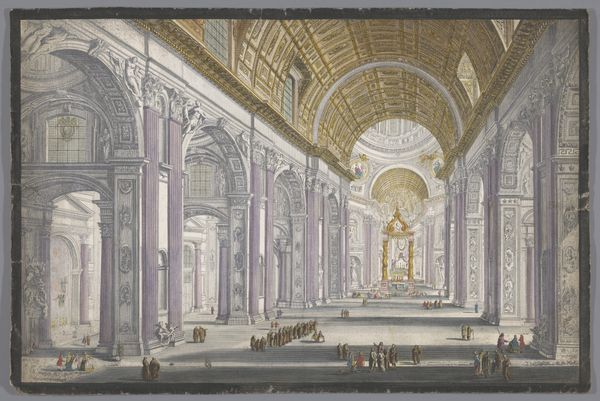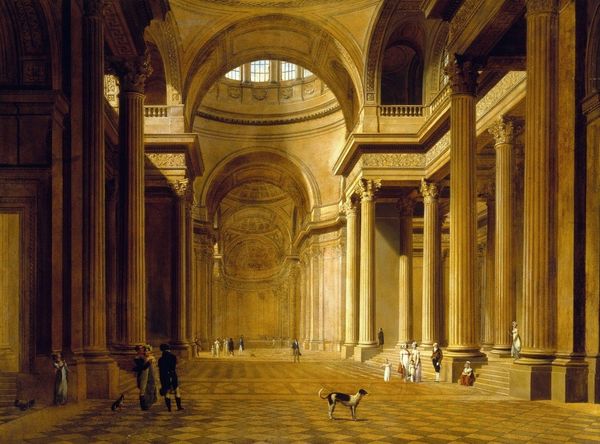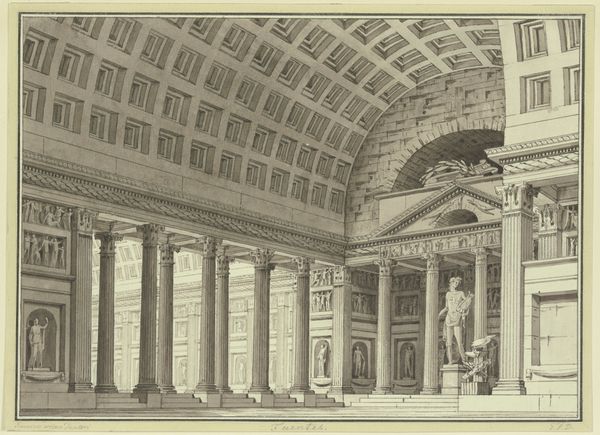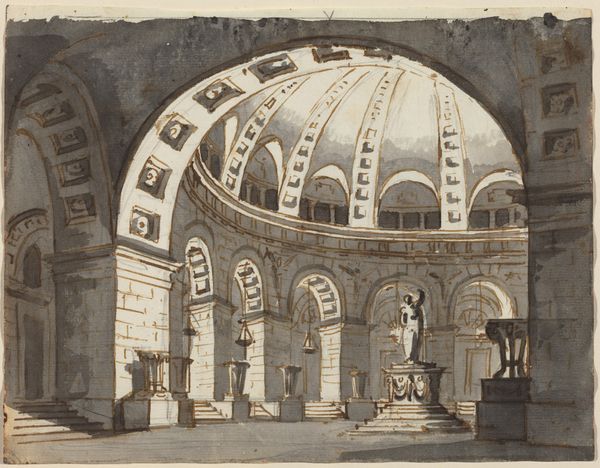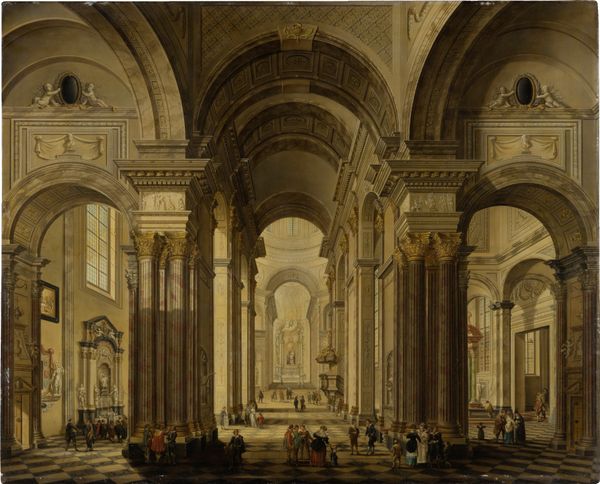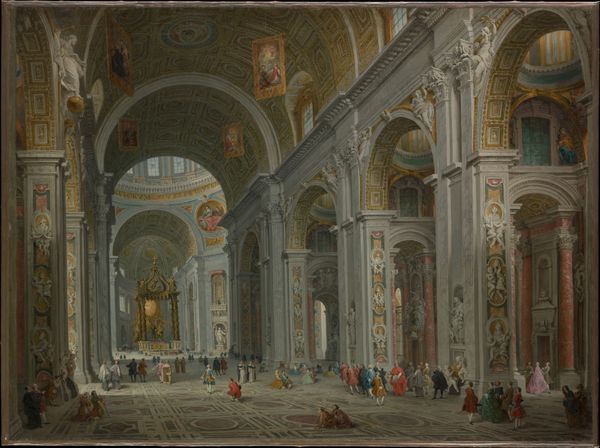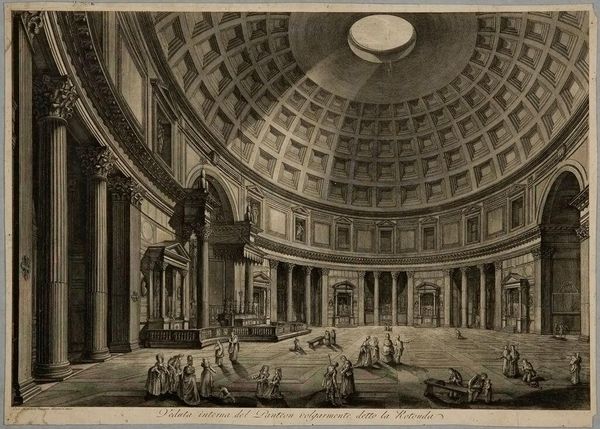
tempera, painting, architecture
#
baroque
#
tempera
#
painting
#
perspective
#
historic architecture
#
traditional architecture
#
city scape
#
cityscape
#
genre-painting
#
italian-renaissance
#
architecture photography
#
architecture
Dimensions: overall: 128 x 99 cm (50 3/8 x 39 in.) framed: 144.1 x 114.3 cm (56 3/4 x 45 in.)
Copyright: National Gallery of Art: CC0 1.0
Giovanni Paolo Panini painted this interior view of the Pantheon in Rome sometime in the 18th century. It gives us a look at the building's architecture, but it also speaks to the role of art in shaping national identity. In Panini's time, the Pantheon was not just an ancient monument; it was a symbol of Rome's past glory, carefully managed and presented to visitors. Note how Panini arranges the figures in the painting, a mixture of locals and tourists, all circulating within the curated space of the building. The Pantheon had been transformed into a Christian church centuries before. Panini’s painting is one piece of evidence among many—guidebooks, souvenirs, and other artworks—that demonstrates how cultural institutions create and reinforce particular views of history. To understand this image fully, we would need to dig into the archives: What were the popular guidebooks saying at the time? What did visitors expect to see? How did the Catholic church use the Pantheon to project its own authority? All these are crucial questions for the art historian.
Comments
No comments
Be the first to comment and join the conversation on the ultimate creative platform.
